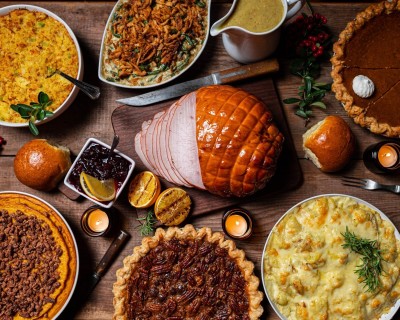
Several years ago, I had the opportunity to participate in a Passover meal that a local church arranged. It was a potluck-style event, so everyone who attended brought their own food. The hosts provided a booklet explaining the Passover meal’s ritual elements and how it points to Jesus. It was an interesting and informative evening.
At that point in my life, I had not been working with Jews very long but had become aware of how important keeping Kosher was to traditional, observant Jewish life. You can imagine that a potluck Passover meal at a church hosted by gentiles was not particularly Kosher; the most memorable contribution at that Passover potluck was the green bean casserole with ham. The casserole got me thinking about how ham is the centerpiece of an Easter Sunday meal for many Christians. This was the first time I was struck by how odd it was that the celebration of Jesus rising from the grave was to consume something that Jesus himself was forbidden to eat — ham.
The meal Jesus had in the upper room was a traditional Passover meal. This meal would have included four key elements that are highly symbolic.
First, there would be roasted lamb, which commemorates the Passover offering. It was also the blood of a lamb that was spread over the doorpost of Israelite homes the night that the angel of death killed the firstborn of the Egyptians.
Second, the meal includes unleavened bread — Matzah — which reminds the Jews how quickly they had to leave Egypt, so quickly that there was no time for the bread to rise.
Third, Jesus and the disciples would have had bitter herbs. The bitterness was to remind the Jews of the pain of slavery in Egypt. Finally, there are four glasses of wine. These four glasses represent the four promises of God to Moses in Exodus 6:6-9. These promises are that God will bring the Israelites out from the yoke of Egypt and bring them to the land he promised to Abraham. He will free the Israelites from slavery, redeem them with an outstretched arm and mighty acts of judgment, and take the Israelites as his people. Every single part of this meal would have been kosher and observed by Jesus and his disciples.
As a non-Jewish Christian, I recognize that I am not bound by the Kosher laws, which would forbid me from a whole host of dietary restrictions like mixing dairy and meat or eating pork or shellfish. When the first gentile (the description for all non-Jews in the New Testament) became a follower of Jesus, the Apostle Peter was so surprised that he had to ask the elders of the early church in Jerusalem what the requirements were for gentiles. The answer in Acts 15 was that gentiles were supposed to “abstain from food sacrificed to idols, from blood, from the meat of strangled animals and from sexual immorality.” From this passage, it is clear that gentiles are not obligated to keep kosher. And yet, it seems an affront to celebrate Easter by eating ham.
Nor are gentiles required to follow the feasts that Jesus kept. As the gentiles became the majority of those who followed Jesus as Messiah, the feasts and practices that Jesus did were ignored or outright mocked. One of the early church fathers, John Chrysostom, raged against Christians who celebrated the Jewish feasts: “The festivals of the pitiful and miserable Jews are soon to march upon us one after the other and in quick succession: the feast of Trumpets, the feast of Tabernacles, the fasts. There are many in our ranks who say they think as we do. Yet some of these are going to watch the festivals and others will join the Jews in keeping their feasts and observing their fasts. I wish to drive this perverse custom from the Church right now.”
It is men like John Chrysostom who drove the wedge between Jews and gentiles, which paved the way for nearly 2000 years of Christian antisemitism. They make a mockery of our Christian faith by cutting us off from the very root that sustains us. There is a particular arrogance that is reasserting itself among Christians — perhaps for the first time in a generation. This arrogance denies the Jewishness of Jesus and the disciples. It rejects the promise of God to Abraham that the land belonged to his people, the Jews, and they would be a blessing to the whole earth. It’s this antagonism that made me wonder if the choice of ham for Easter was an intentional rejection of the Jewish part of the story. Fortunately, it seems this is not the case.
For a long time in the United States, lamb was the preferred meat of Easter. However, in 1940s and 50s, there was a shift from lamb to ham. The explanation often given is that the rise in synthetic fabrics made sheep wool less necessary and abundant. Secondly, canned mutton was part of the rations given to soldiers in World War II. Finally, the biggest reason is that pigs are cheaper to raise than lamb and are often slaughtered in the fall to be cured and ready to eat in the spring.
I have not sworn off pork and shellfish. I like a good ham sandwich as much as the other gentiles. Yet, during Holy Week, a week that is the retelling of freedom from slavery and God’s restoration of Israel back to the land that He promised Abraham, I think we should lean into the Jewish roots of our faith rather than ignore them. Perhaps a nice rack of lamb or beef tenderloin would be a better meat to enjoy as we celebrate the greatest event in all of human history: the resurrection of our Lord Jesus Christ.
Luke Moon is Executive Director of the Philos Project, and organization committed to promoting positive Christian engagement in the Near East.








